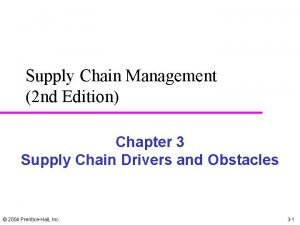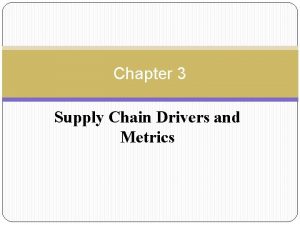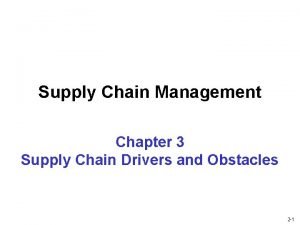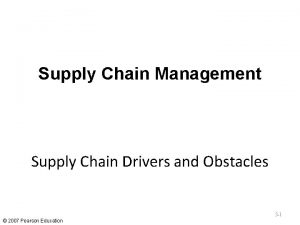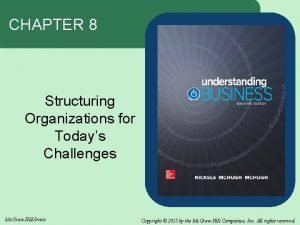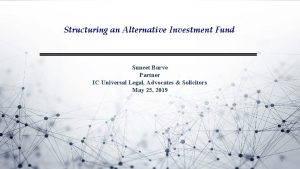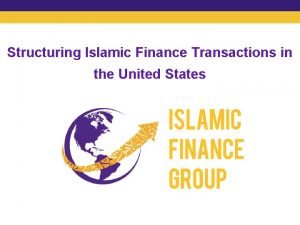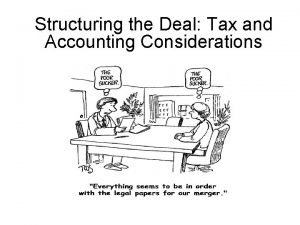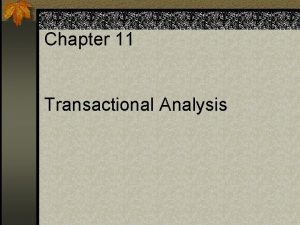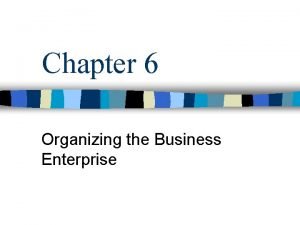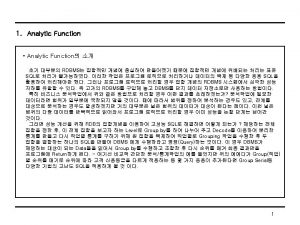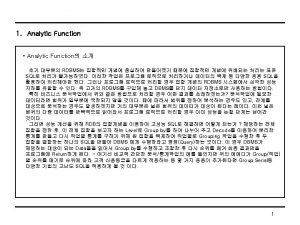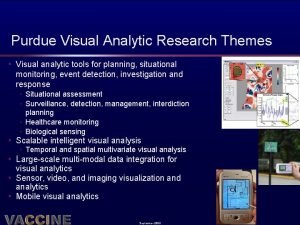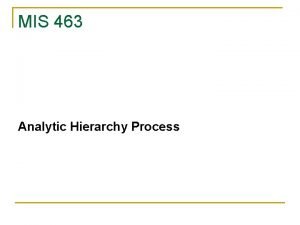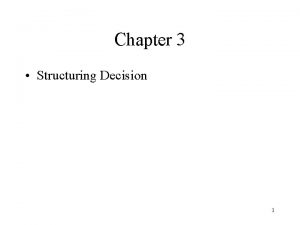Structuring Nuclear Projects for Success An Analytic Framework



















- Slides: 19

Structuring Nuclear Projects for Success An Analytic Framework Presented by: Didier Beutier, Vice President for Economic and Prospective Studies, Areva Milton Caplan, President, MZConsulting Inc. Co-chairs WNA Economic Working Group WNA Annual Symposium September 5, 2008

Introduction • Economics of Nuclear Plants has now been demonstrated • Many studies completed • Documented in WNA Report “The New Economics of Nuclear Power” dated 2005 • Next step in the nuclear renaissance is to focus on how to structure these projects to make them happen

Nuclear Project Characteristics • • • Nuclear Project are large complex projects Capital intensive Long project schedules Complex regulatory environment Subject to extensive public scrutiny

Project Structure • Utilities are generally risk averse • For new nuclear projects utilities have to take – Project delivery risk – Operations risk – Financing risk • Past experience with new build has been difficult • Utilities want successful projects • They will not risk the company on one project!

What are the Utilities Saying? • “ we were able to negotiate a power purchase agreement with the government of XXX. They gave us a very significant cost-sharing for capital cost overruns in the project, and that was very important to us” • “ And you’ll have to determine whether you’re willing to pay the price for certainty” (from the vendor) • “ we would not make the long-term commitment until we got to a point with the NRC where we were highly confident we were going to have the license” • “ there’s a lot of financial risk that needs to be managed. And you have to have very, very confident recovery methods to preserve your credit…” • “ I think it is more of a negotiated deal - it’s more moving forward together, understanding the risks very clearly, as opposed to one side pointing fingers at the other side” (working with the regulator)

Structuring Nuclear Projects for Success

Outline of Report • • Risks Project Structuring Financing Role for Government

Nuclear Project Risk Matrix

Risks • Regulatory – – Safety is paramount Investors need predictability Stability in regulatory process is vital Public interest is served by regulatory certainty and smooth procedures • Project Delivery – – – Design Equipment supply Project management Construction Commissioning Standardized design reduce risks

Risks • Operations – – – Technology issues Staffing issues Management issues Global fleet is operating extremely well Increased staff training Sharing of information (WANO/INPO) • Decommissioning – Potentially open ended liability – Rules set by government – Norm is for funds to be set up to cover • Electricity Generation and Carbon Pricing – – – Need a market for the output Nuclear operates as base load Can be regulated or in non-regulated environment Carbon pricing is likely to apply Need market assurance

Project Structuring: beyond the basics…

…to the key: risk control and allocation • Prime participants – – Government, in charge of energy policy and regulatory framework Electricity customers, wanting electricity at a competitive price Utility, ultimately responsible for the complete project achievement EPC contractor, responsible for delivery according to budget and schedule – Vendors, responsible for equipment supply – Safety Authority, protecting public safety and the environment • Total project cost and risk of failure will be minimised if each kind of risk along project development is allocated to the most capable party with equitable reward sharing prospect

Phase 1 Development Risk category Risk Control Examples Technical Internationally-accepted designs Building on existing nuclear sites Business Case Build business case on various demand scenarios Seek investment from major power users Societal and Political Public debates and hearings Gaining cross party political support Emphasize environmental advantages of nuclear Develop waste management policy with government Government and Utility at the forefront

Phase 2 Construction Risk category Risk Control Examples Technical Develop sound contractual arrangements for involved parties Invest in supply chain infrastructure Invest in transport infrastructure near the site Previous construction experience Strong project management Business Case Stick to standardized designs Use good mix of permanent and contract staff Societal and Political Public debates and hearings Utility, contractor and vendor at the forefront

The Role of Government: framing, ruling and enabling • Long Term Energy Policy: combining security of supply, environmental protection and competitiveness • Electricity Market Design: aiming at reliable and cost efficient supply, encouraging long-term investment • Climate Change Policy: penalizing carbon emissions • Licensing and Local Planning System: towards predictable, streamlined processes • Nuclear Liability: legal framework defining the respective insurance responsibilities • Safety Regulation of Operations • Radioactive Waste Management and Used Fuel Management: deciding radwaste disposal policy, used fuel recycling or not • Decommissioning: regulating and enforcing timely funding by plant operators

Market/Ownership Model : quite different situations resulting in diverse exposure to risk • Regulated utility – Monopolistic, low market risk – Cost-of-service rate regulation – Unexpected costs, once authorized, can be passed onto customers • Merchant plant – No direct outlet to end-user customer – High price risk in liberalized competitive markets • Hybrid – Oligopolistic market – Vertically integrated companies, combining generation and direct supply outlet to market – Large asset base

Influence on Project Finance • Regulated utility – High security for investors and lenders, lower WACC value (5%) • Merchant plant – High risk to be rewarded: high WACC value (11%) – Request for low debt/equity ratio in project financing – Mitigated by US 2005 Energy Act • Hybrid – Capacity to finance heavy investments on balance sheet – High credit rating – Moderate WACC value (8%)

Examples of financing routes for on-going nuclear projects • Regulated utility – Vogtle 3 -4 in Georgia (USA) • Merchant Plant with project financing – South Texas Project 3– 4 in the USA • Hybrid: Balance sheet financing by large utility groups – e. g. Flamanville 3 in France • Public-private Joint Venture – Cernavoda 3 -4 in Romania • Power user investment – e. g. Olkiluoto 3 in Finland

Conclusion • Nuclear power plants have unique characteristics – Capital intensive and long schedules – Relatively low and stable operating costs • To successfully implement new build nuclear projects requires attention to the project structure • Risks must be allocated to the stakeholder in an equitable fashion that encourages each stakeholder to fulfil its responsibilities • Government has an important role to play to create the appropriate framework for success
 Framework for structuring drivers
Framework for structuring drivers Facility related metrics
Facility related metrics Components of facilities decisions
Components of facilities decisions Framework for structuring drivers
Framework for structuring drivers Lesson 15 nuclear quest nuclear reactions
Lesson 15 nuclear quest nuclear reactions Fisión nuclear vs fision nuclear
Fisión nuclear vs fision nuclear Your child's success or lack of success
Your child's success or lack of success Your child's success or lack of success
Your child's success or lack of success Structuring element dapat berukuran
Structuring element dapat berukuran Structuring organizations for today's challenges
Structuring organizations for today's challenges Alternative investment structuring
Alternative investment structuring Structuring element
Structuring element Islamic structuring
Islamic structuring Reverse triangular merger
Reverse triangular merger Parent ego state
Parent ego state Morfologi citra
Morfologi citra Organizational structuring
Organizational structuring Thinning and thickening in image processing example
Thinning and thickening in image processing example Cormier and hackney counseling model
Cormier and hackney counseling model Direct and indirect observation
Direct and indirect observation
